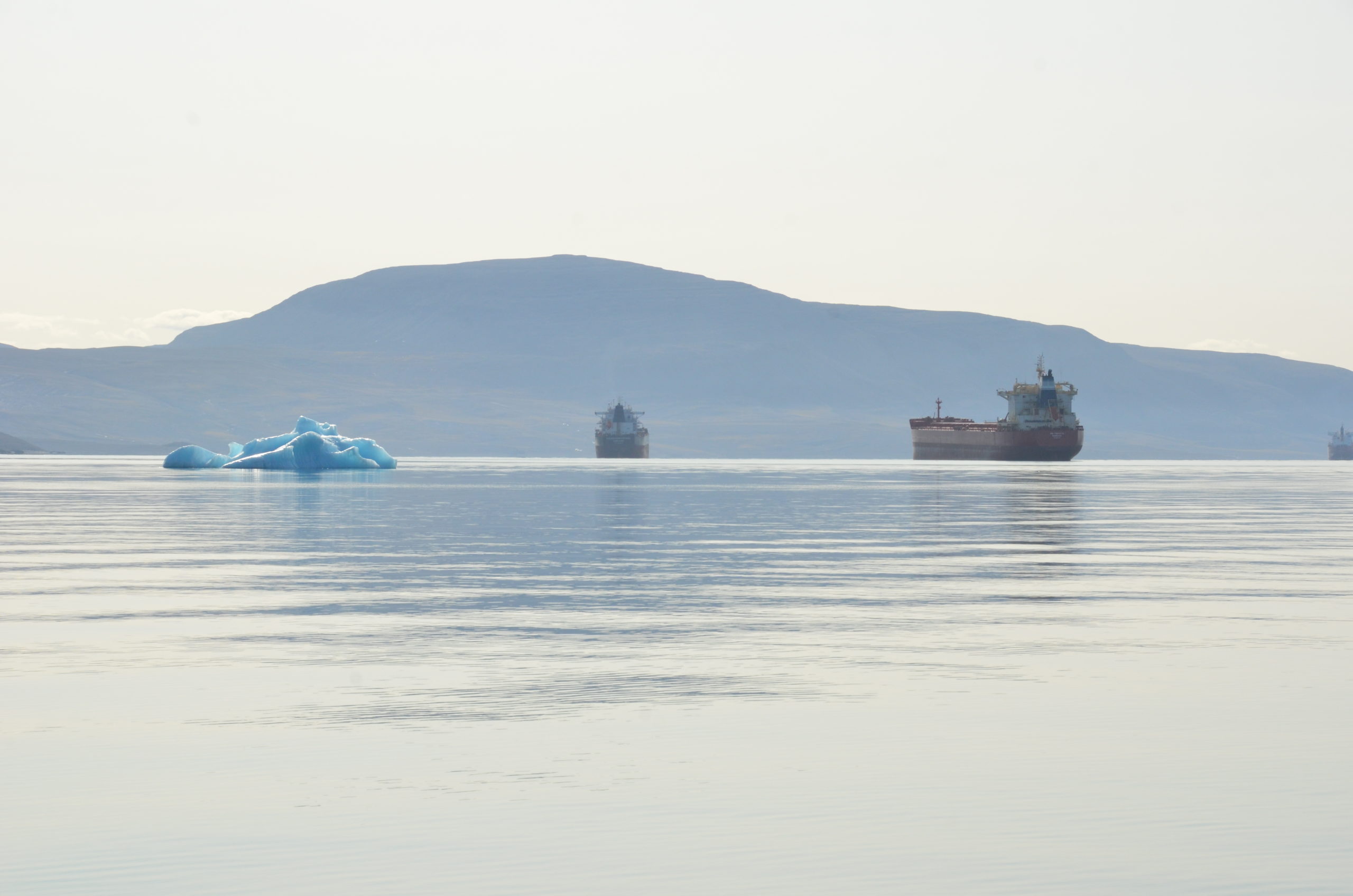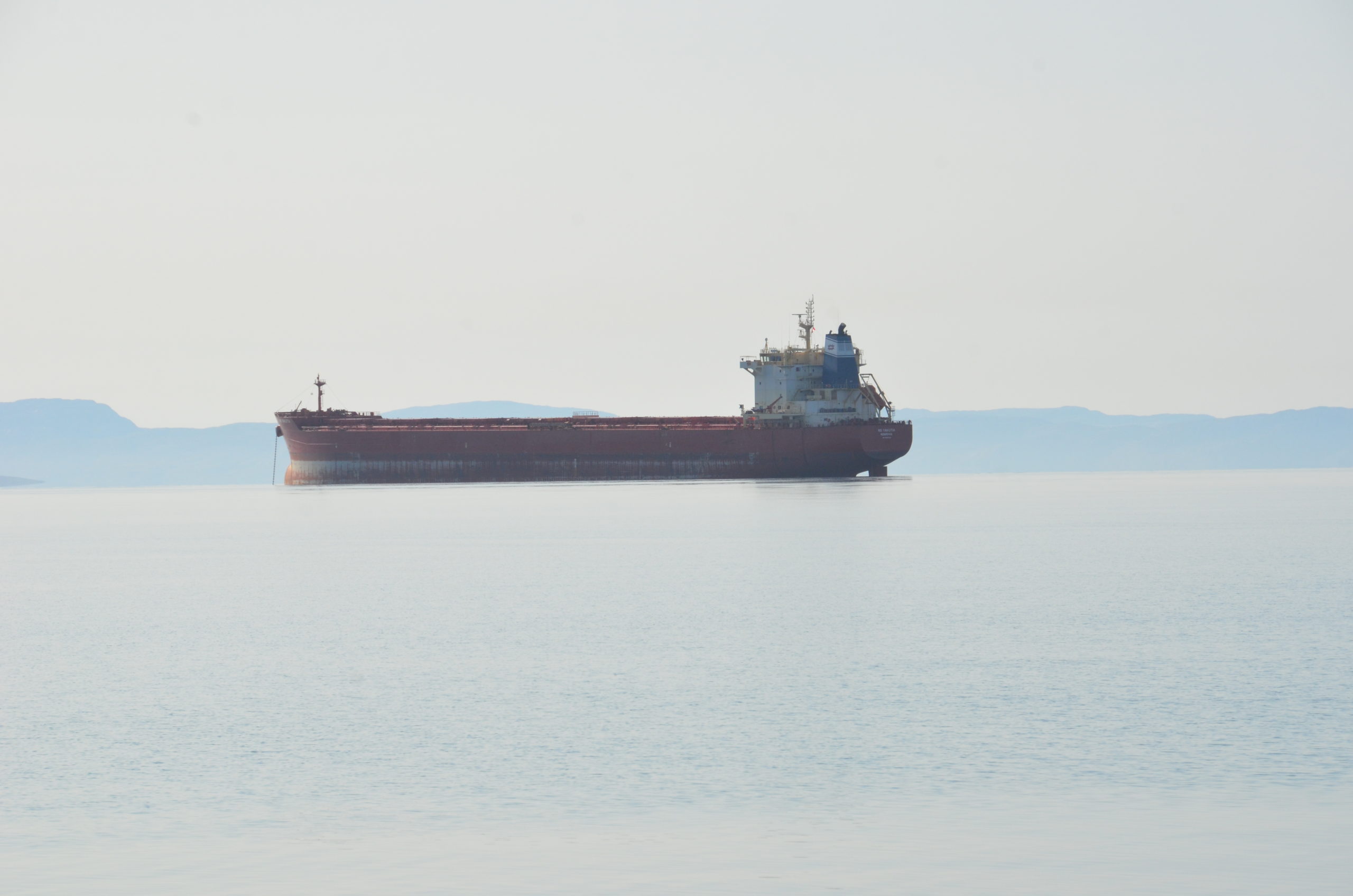Clearing the air: WWF-Canada leadership leads to reduced Arctic ship emissions
Arctic communities and wildlife in Canada can now take a deep, clean breath: the International Maritime Organization (IMO) recently announced its approval of an emission control area (ECA).
The designation, which imposes strict regulations on the amount of air pollution that ships can produce while travelling through the region, follows more than two years of WWF-Canada efforts to publicly promote awareness and build a groundswell of support both in Canada and internationally.

“We engaged with stakeholders and rightsholders, wrote articles, developed policy documents and staged interventions on the floor of the IMO,” says Sam Davin, WWF-Canada senior specialist in marine conservation and shipping, who attended the IMO meetings in London last month. “This designation of the Canadian Arctic as an emission control area is a victory for the people and wildlife who call the Arctic home.”
The proposal, submitted by the Canadian government, asked that the Arctic coast be granted something Canada’s east and west coasts have had since 2013: strong and enforceable international rules around vessel emissions that cover the extent of their 200-nautical-mile exclusive economic zone.|
In a region where vessel traffic has more than doubled in the last 10 years — and one that is uniquely vulnerable to the effects of air pollution — this decision couldn’t come soon enough.

ECAs are the IMO’s answer to the problem of global air pollution caused by fossil fuel-powered ships, including sulphur oxides, nitrogen oxides and particulate matter. Vessels travelling through ECAs are required to use low-sulphur fuels and implement other pollution-mitigation measures on their ships. Ships comply by either switching to low-sulphur fuels before entering the ECA or, more problematically, by using on-board technologies that “scrub” certain pollutants from exhaust before releasing it into the air. (More on that later.)
“Aside from the significant human health benefits like improved air quality,” says Davin, “these measures will reduce the acidification of the ocean, mitigate nutrient overloading, and reduce harmful emissions from black carbon — a short-lived, potent airborne pollutant that accelerates snow and sea ice loss — in some of Canada’s most vulnerable waters.”
Ocean acidification happens when compounds like sulphur, nitrogen and carbon combine with seawater, making it more acidic and less hospitable for marine life, especially shellfish and coral.
Nutrient overloading occurs when excess nutrients from pollutants like nitrogen and phosphorous cause a fertilizing effect, prompting algae overgrowth that can suck up critical oxygen stores and affect the health of marine wildlife and their ecosystems.
Black carbon comes from the combustion of fossil fuels, biofuels and biomass, which produces a fine, soot-like particulate. When settling on snow and ice, it absorbs more of the sun’s warmth and accelerates melting.
The ECA designation is important because it allows a country to regulate pollution up to 188 nautical miles beyond its own smaller 12-nautical-mile territorial sea. So why did it take so long for the Arctic to get its own ECA? When the Canadian government proposed ECAs south of 60 degrees back in 2009, it claimed there was not sufficient research and modelling to support the same request for Arctic waters.
But data collected since then has shown, unambiguously, that the environmental impacts of marine shipping in the Arctic are expanding, especially as resource extraction in the region increases and sea ice loss lengthens the navigation season for cargo and cruise ships.
After years of mounting evidence and appeals to policymakers, the Canadian Arctic ECA will come into effect in 2026. It will help fill what WWF-Canada marine conservation specialist Kailee Scott in 2022 called “a glaring gap in social equality” that left northerners and Arctic wildlife less protected than their southern counterparts.

But now that our calls have been answered, the work begins to ensure this important international regulation is matched with domestic due diligence, says Davin. For the ECA to have the greatest benefit, ships should comply by using distillate fuel, like marine gasoil, or other cleaner alternatives as opposed to residual “heavy” fuels like ultra-low sulphur fuel oil, which may meet sulphur requirements but still send black carbon into the air and toxic wastewater into the sea.
“Canada must also complement the ECA approval with its own strong measures,” he adds, “such as a total domestic ban on scrubbers, a technology that effectively converts a ship’s air pollution into water pollution, and which is largely seen by myself and other conservation experts as a regulatory loophole that does more harm than good.”
And, of course, the government must ensure that any increased shipping costs resulting from these measures don’t get unloaded onto Northern communities, which are already facing economic challenges while being the most affected by and least responsible for climate change.
